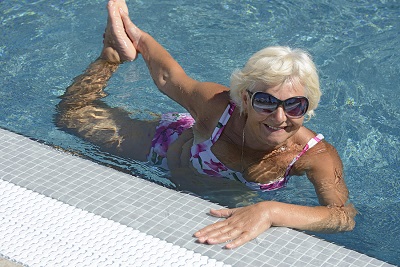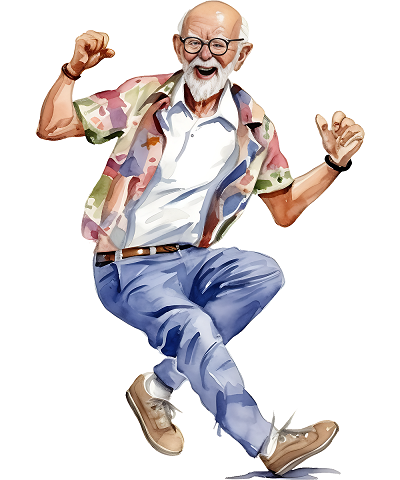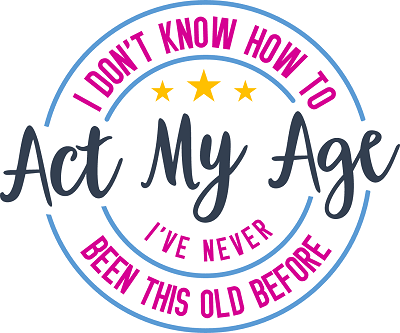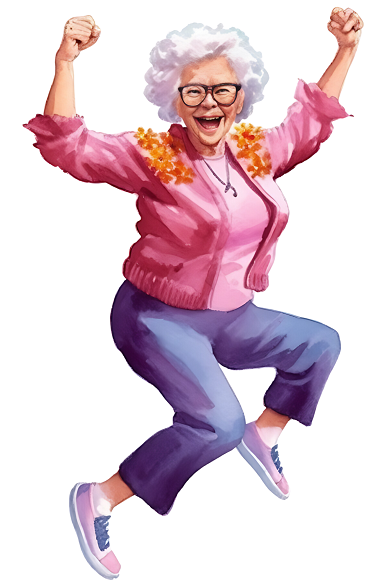 For older adults with arthritic joints and the stiffness that goes with it, high impact exercises usually don’t work.
For older adults with arthritic joints and the stiffness that goes with it, high impact exercises usually don’t work.
However, because older adults know the value of exercising, they adapt and overcome by doing no impact/low impact workouts. Four of the top exercises for older adults include:
1 – Water Aerobics
Doing aerobics in a pool is probably the most beneficial of them all. Not only can you get a good cardio exercise, but strength building, too.
By using the natural resistance of water, it is a total body workout that is very joint friendly. Exercising in an outdoor pool is best as you can also get the recommended daily allowance of Vitamin D with just 5 to 10 minutes of sun exposure.
If you are in an area with inclement weather in the winter, find an indoor pool at a local health club, YMCA/YWCA or gym.
2 – Cycling
Whether you cycle indoors on a stationary bike or outdoors, cycling is a good lower body workout. To get the maximum benefit, choose a route with varied terrain.
3 – Elliptical Trainer
Friendlier on joints than a treadmill, elliptical trainers work both the upper and lower body without the constant joint pounding of walking or running. Most have a variable resistance adjustment so you can get as good of workout as you want.
4 – Yoga
Not only is yoga joint friendly, it actually improves the range-of-motion of joints by increasing their flexibility. This means less pain and stiffness.
Plus, two other benefits from yoga are increased breathing capacity (meaning you get a better transfer of oxygen in and carbon dioxide out of your blood) and a better outlook on life from the meditation part.
Just be sure to get in a class geared to your age group and physical ability.
All of these exercises, except the elliptical trainer, can be done outside where your body can soak up Vitamin D and you can breathe in fresh air.
However, when the weather turns bad, all can be done indoors. Without the sun as an older person, be sure to get the daily recommended dose of Vitamin D from either a multi-vitamin or as a supplement.
Vitamin D deficiency is common in older adults. Up to age 70, the daily amount is 600 IU per day; after age 70 it jumps to 800IU.
Without enough Vitamin D, your body will not be able to make use of the calcium you take in each day, thus increasing your risk of osteoporosis through the loss of bone density.


